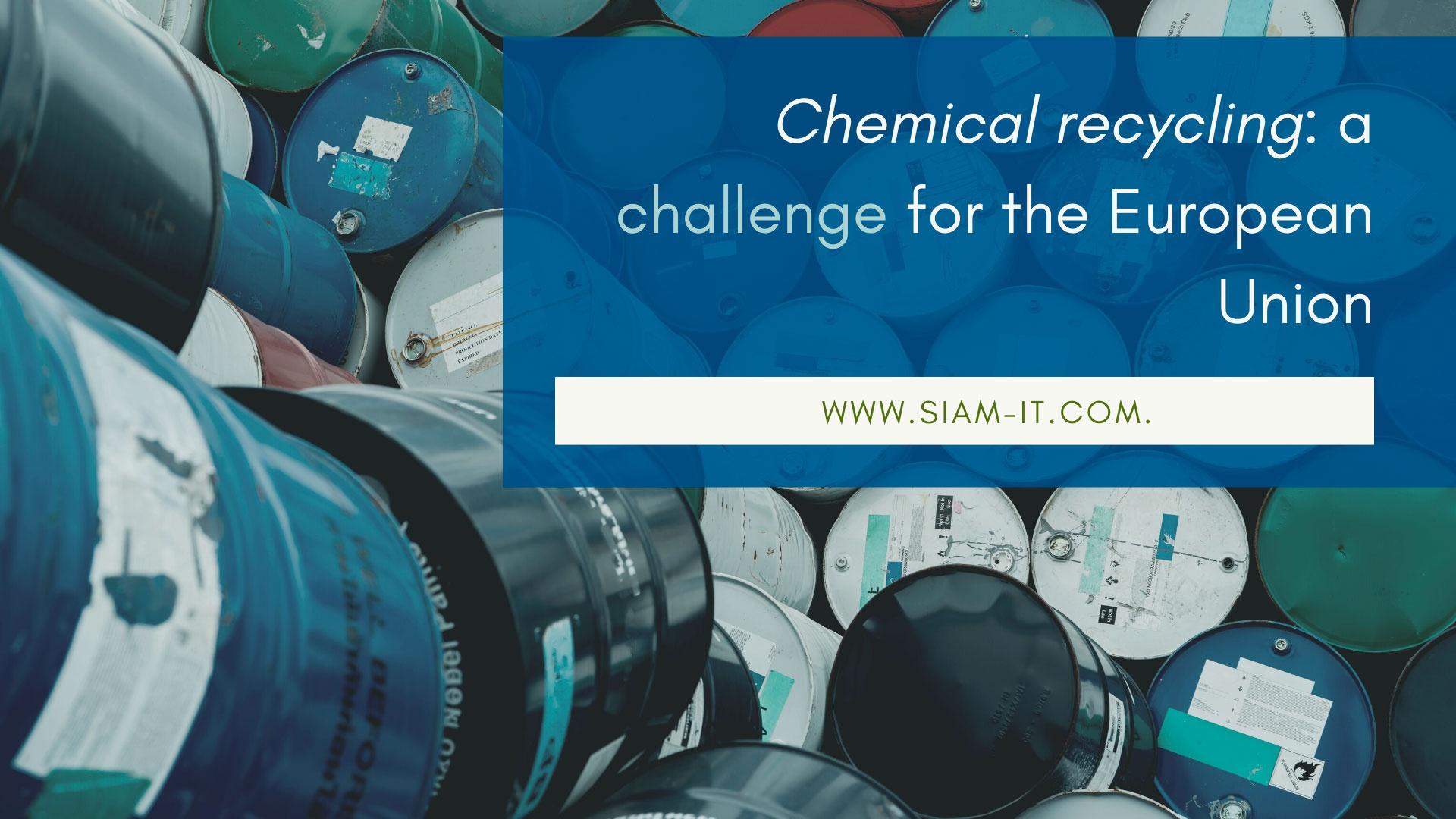
Following REACH registration and to eliminate SHVCs from plastic waste streams, keys to achieving non-toxic recycling
A new study by the ECHA focuses on the European Union situation and developments in chemical recycling.
Chemical recycling, a process by which plastic polymers are chemically broken down to supply new products such as crude oil, naphtha or fuels, is used for processing various types of waste, including biomass, concrete and plastic waste. However, only a really small part of plastic waste has been recycled or incinerated, with the rest accumulating in landfills and becoming ubiquitous in the natural environment.
Taking into account current levels of plastic pollution and its potential to harm human health and the environment, ECHA has published the report “Chemical recycling of Polymeric Materials from Waste in the Circular Economy”, which addresses the current state of knowledge regarding chemical recycling of polymeric materials from waste and its potential role addressing plastic pollution.
With the aim of achieving a global and multidisciplinary vision, the study has addressed chemical recycling using two main methodologies:
- •Literature review: Revision of 229 research and grey literature sources published since 2015 to collect and analyse the most recent informations.
- •Expert consultation: The authors of the study interviewed 22 experts in chemical recycling, with the aim of “completing and cross-checking the information found in the reviewed literature through expert judgement”.
The result of this extensive research phase is a text that addresses the main variables involved in chemical recycling, such as available technologies, waste streams, tracking systems or policy developments, and that draws several conclusions and recommendations that we summarize below.
Main conclusions and potential solutions
- • The lack of clarity in chemical recycling terminology leads to confusing conclusions on the potential role of chemical recycling in the circular economy, for what harmonisation of chemical recycling terminology is necessary. Papers, reports and regulatory documents should always specify the chemical reprocessing technologies included in their scope.
- • Chemical recycling technologies (pyrolysis, gasification and chemolysis) differ in their potential to contribute to the circularity of plastics, so their potential should be evaluated case-by-case to avoid mistaken generalisations of advantages/disadvantages.
- • The findings of the identified studies do not provide a solid ground for making conclusions about the fate of substances of concern (SVHC) in all established chemical recycling processes. To make sound conclusions, investigations at chemical recycling plants should be carried out.
- • Regulatory issues in chemical recycling are currently not discussed in scientific papers. However, the opportunities and challenges posed by the REACH Regulation and other chemicals, waste and product safety legislations remain specific to each chemical recycling technology. And it is that if plastic waste, instead of being destroyed and discarded, re-enters the economy, either as recycled material incorporated in new products or for marketing as secondary raw material, the REACH regulation is applied to guarantee the safety of the new product.
- • Digital technologies, especially blockchain technology, contribute to improving the traceability of substances of concern in recycling. However, its implementation requires substantial inter-organisational and organisational efforts.
